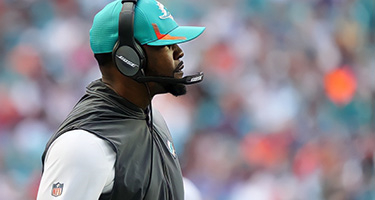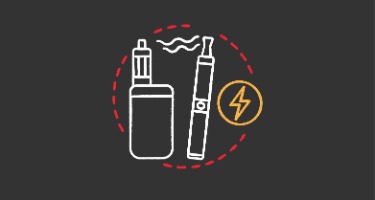Biggest Product Liability Claims in the U.S.
Defective product lawsuits involving consumer products are often big news because of the number of people they affect, and the amount of damages awarded to people who have been harmed.
Defective products including unsafe prescription drugs and medical devices cause serious injuries or death to thousands of Americans each year. This often happens before the dangers of the product are widely known. In some cases, the product manufacturer understands the risks but fails to provide adequate warning. A person who has concerns about a product’s safety may prevent many people from being harmed by contacting a defective product injury lawyer and pursuing a product liability claim.
Below, we look at some of the biggest product liability claims in the United States and other types of claims and potential product defects and hazards.
What is a Defective Product Lawsuit?
When a consumer is harmed while using a legal product as it is intended to be used, the injured person may have a right to seek compensation for his or her losses, including medical bills, lost income due to the injury and pain and suffering. A defective product lawsuit may seek compensation from the product manufacturer, wholesaler, distributor and retailer that sold the item.
There are three common types of product liability claims or lawsuits. They each assert that the defendant owes compensation to the injured plaintiff because the defendant knew or should have known the product was faulty. A claim may allege:
Defective design. The claim asserts that the product is inherently unsafe because of how it was designed.
Manufacturing defect. The claim charges that a flaw during the manufacturing process caused the product to be unsafe. These claims often target a product manufactured within a defined timeframe in which a manufacturing flaw existed and was identified by a certain production code.
Failure to warn. This type claim asserts that the manufacturer or other parties failed to properly warn the consumer or end-user about the dangers posed by the product and/or did not provide adequate warnings and instructions for using the product safely.
The lawsuit must establish one of the three claims above and demonstrate that, despite the fact that the plaintiff used the product correctly, the defect or failure caused the person to be injured.
When numerous people file similar product liability claims, the courts may order that the cases be grouped as multi-district litigation for the pretrial phase of litigation or consolidated as a class action case. A class-action case will group claims according to similar allegations. Multi-district litigation (MDL) groups lawsuit geographically, so cases may be heard together for more efficient handling by the court in the pre-trial stages. Plaintiffs keep their individual lawsuit in an MDL.
Large claims are often settled out of court, with the presiding court approving details of the settlement agreement. Others are decided by a jury. In a class action, the settlement is then publicized and additional consumers who were injured by the faulty product are given the opportunity to submit evidence that they, too, deserve compensation.
The Insurance Information Institute says that in 2017 the median award in product liability personal injury cases was $1.5 million. The average, which can be skewed by particularly large awards, was $5.1 million. Product liability cases involving defective medical products had the highest median award in 2017 at $4 million.
Major Types of Product Defect Cases in the U.S.
The five largest product liability cases in U.S. history were:
Automotive. General Motors (GM) had manufactured several car models with faulty ignition switches that could shut off the engine during driving, disable power steering and brakes, and prevent airbags from inflating. GM admits to at least 13 deaths and 31 car accidents caused by faulty ignition switches and has established an uncapped $400 million fund designed to compensate consumers for deaths and injuries caused by its vehicles. Several lawsuits, including two class-action suits, are pending.
Tobacco Products. Philip Morris, which has since changed its name to Altria Group Inc., was named in a 2002 lawsuit in which a woman who had lung cancer claimed that smoking cigarettes had caused her sickness and that her tobacco addiction was caused by the tobacco company's failure to warn her of the risks of smoking. In addition to $850,000 in compensatory damages for the plaintiff’s losses, Philip Morris was ordered to pay $28 billion in punitive damages. After nine years of appeals, the amount was reduced to $28 million.
Automobile Parts. General Motors was sued in 2008 over a chemical used in its Dex-Cool coolant, which caused leaks and engine damage. A class-action suit filed on behalf of about 35 million GM customers demanded approximately $20 billion. The plaintiffs eventually received individual payments of $400 to $800.
Breast Implants. Dow Corning agreed in 1998 to pay $2 billion to settle a $4.25 billion class-action suit filed by customers who claimed that their silicone breast implants were rupturing, causing them injury, disfigurement, scleroderma, and death.
Automobile Parts. General Motors was ordered to pay $4.8 billion in punitive damages and $107.6 million in compensatory damages after a product liability lawsuit claimed a faulty gas tank on its 1979 Chevrolet Malibu caused explosions that killed six individuals.
Asbestos. Owens Corning Corp. settled multiple product liability lawsuits claiming that its asbestos building materials caused mesothelioma, a type of terminal cancer, by agreeing to pay $1.2 billion in 1998. There were 176,000 people involved in this product liability case.
Additionally, many defective product cases are filed every year seeking justice after injuries caused by faulty products such as:
Automotive parts and systems, like brakes, steering systems, and airbags. Joye Law firm helped a South Carolina family recover a confidential amount on appeal of an award of $12.5 million in compensatory damages and $250 in punitive damages for their son’s death caused by faulty door latches on a Dodge minivan. In another case, Joye Law Firm helped a widower recover a settlement from GM after the faulty design of the 2002 Chevrolet TrailBlazer allowed the roof to collapse and kill his wife in a rollover crash.
Asbestos-containing products, including building products and talcum powder, which is said to cause ovarian cancer in unsuspecting women who have used talcum powder daily for decades.
Children’s products, including toys, cribs, car seats, and strollers.
Defective medical devices, including blood clot filters; transvaginal mesh implants; Stryker and DePuy hip implants; intrauterine birth control, like the Mirena IUD and NuvaRing; etc.
Defective prescription drugs, such as Pradaxa (dabigatran) and Xarelto (rivaroxaban) blood-thinning medications, the Yaz birth control pill, and the GranuFlo and NaturaLyte dialysis medications manufactured by Fresenius Medical Care.
E-cigarettes and vaping products, which have been implicated in more than 2,000 cases of respiratory injury and whose leading manufacturer, Juul, has been accused of deceptive marketing. Multiple e-cigarette / vaping injury lawsuits are being filed across the country.
Household appliances, including furnaces and fireplace inserts that emit carbon monoxide, and washers, dryers, ovens, stoves and countertop appliances that start fires.
Industrial machinery and manufacturing equipment, which cause hundreds of fatalities among workers each year. Joye Law Firm helped an injured worker who lost his arm due to unguarded industrial machinery obtain a $2.3 million settlement.
Recreational vehicles, such as bicycles and ATVs.
Product Recalls and Consumer Protection from Defects
Many consumer products are identified as causes of serious injuries each year.
Manufacturers, importers, distributors, and retailers of consumer products in the U.S. are required by law to notify the Consumer Product Safety Commission (CPSC) if they know that:
A defective product could create a substantial risk of injury to consumers
A product creates an unreasonable risk of serious injury or death
A product fails to comply with applicable consumer product safety rules or standards under the Consumer Product Safety Act or any other statute enforced by the CPSC
An incident in which a child (regardless of age) suffers a serious injury or dies as a result of choking on a marble, small ball, latex balloon, or other small part contained in a toy or game.
Failure to fully and immediately report this information may lead to substantial civil or criminal penalties. An individual harmed by a manufacturer’s failure to warn of a product’s risk also may have a right to file a product liability lawsuit.
The CPSC can take several actions once a defect is reported, including announcing a recall. Over just two weeks in November-December 2019, the CPSC or product manufacturers issued recalls for:
Bass Pro Mr. Steak Gas Grills due to fire hazard (about 3,300 units)
WilliamsRDM StoveTop FireStop Rangehood and Microhood Automatic Cooktop fire suppressors due to failure to operate (about 9,300 pairs)
Surly Bikes front bicycle racks due to failure, crash and injury hazards (about 5,139)
Trek Super Commuter+ 8S electric bicycles due to fall hazard (about 2,840)
DaVinci Bailey bassinets due to fall hazard (about 3,000)
STANLEY brand 16 oz. wooden handle nailing hammer due to injury hazard caused by a potentially loose grip (about 211,000)
2018 and 2019 Yamaha EF2000iS portable generators for fire and burn hazards due to leaky fuel tanks (about 10,100).
If you have been injured by a product, a knowledgeable product liability lawyer can help you assess whether you have a valid claim against the manufacturer.
























